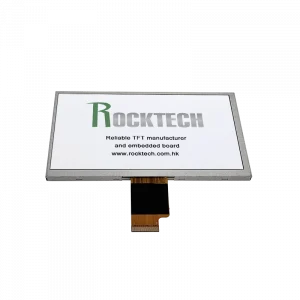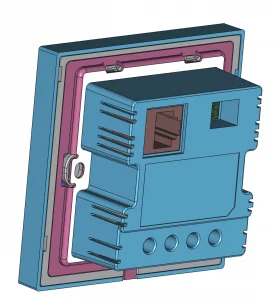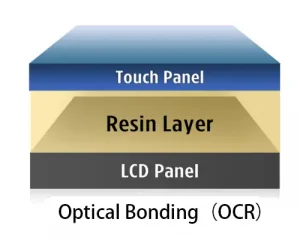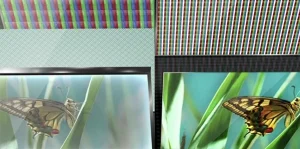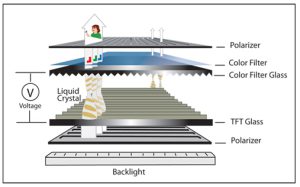As the global fitness tech market grows, manufacturers prioritize display quality to improve user experience. According to Statista, the fitness app and equipment market is expected to surpass $30 billion in the next few years. TFT LCD tackles the three major pain points in smart fitness devices—clear visibility in bright light, sweat protection, and long lifespan—becoming a key component in the industry’s smart upgrade.
For many people, the ability to *see* their progress—whether it’s calories burned, distance run, or strength gained—makes all the difference in staying motivated. Visual feedback transforms invisible effort into measurable achievement. And that’s exactly why display quality in fitness equipment matters more than ever.
Why Display Technology Is So Critical in Smart Fitness Devices
With the widespread adoption of smart fitness equipment in homes, gyms, and outdoor environments, TFT LCD screens have become the primary interface between users and machines. Whether it’s a treadmill, spin bike, or smart dumbbell, users expect displays to offer high clarity, durability, and reliability.
However, the industry continues to face three common pain points:
-
Inability to read screens clearly under bright lighting
-
Sweat damage causes touch failures or malfunctions
-
Long-term use leads to screen degradation
TFT LCD technology is solving each of these, one by one.
1. Sunlight Readability: Tackling Screen Visibility in Bright Environments

ips DIsplay for Smart fitness equipment application
1.1 Why LCDs Fail Under Direct Sunlight
Traditional LCDs often fail outdoors due to:
-
Insufficient brightness (<250 nits)
-
Lack of anti-reflective coatings
-
Lower contrast ratios, making text unreadable
This makes it hard for users to view screen content during outdoor runs, balcony workouts, or under intense gym lighting.
1.2 TFT LCD’s High Brightness & Anti-Glare Tech
Modern TFT LCDs incorporate:
-
High-brightness backlight systems (≥800–1000 nits)
-
AR/AF coatings to resist glare and fingerprints
-
IPS technology offering 178° wide viewing angles
These features enable crystal-clear visibility even in direct sunlight, ensuring the readability of data and visuals.
1.3 Performance Comparison: Display Visibility by Brightness
| Display Type | Visibility in Sunlight | Brightness | User Rating (5★ Max) |
|---|---|---|---|
| TFT LCD (High Brightness) | ✅ Clearly visible | 1000 nits | ⭐⭐⭐⭐⭐ |
| Standard Commercial LCD | ⚠️ Hard to read | 300 nits | ⭐⭐☆☆☆ |
| Indoor OLED | ❌ Severe glare | 450 nits | ⭐☆☆☆☆ |
2. Sweat Resistance: Tackling Touch Failures During Intense Workouts
ips DIsplay for Smart fitness equipment application
2.1 Sweat Composition and Common Touch Issues
Human sweat contains:
-
Salt
-
Mild acids
-
Oils
These components can lead to:
-
Capacitive touch failures
-
Corrosion around the bezel
-
Moisture ingress into internal components
2.2 TFT LCD’s Waterproof Build & Wet-Touch Support
High-quality TFT LCDs feature:
-
Optical bonding + OCA waterproof layer
-
Front panels sealed to IP65 or above
-
Support for glove or wet-finger touch
So even during sweaty, high-intensity workouts, screens remain responsive and legible.
2.3 Real-World Use Cases: Treadmills, Bikes, Smart Dumbbells
-
Treadmills: Users frequently adjust the incline and speed
-
Spin Bikes: Resistance needs to be changed mid-workout
-
Smart Mirrors / Dumbbells: Require touchscreen controls
All demand high sweat and corrosion resistance.
3. Long Lifespan: Ensuring Reliability Under Daily High-Use Conditions
3.1 Combating Backlight Fade and Pixel Aging
Regular displays tend to suffer from:
-
Yearly brightness degradation
-
Burn-in or ghosting
-
Color fading
TFT LCDs combat this with:
-
LED backlights rated for 50,000+ hours
-
Brightness auto-adjustment systems
-
Color consistency correction algorithms
3.2 Built for Gym Conditions: Heat, Humidity & Continuous Use
Fitness centers are:
-
High-temperature, high-humidity zones
-
Often unmanned or left running all day
TFT LCDs use wide-temp components and EMI shielding to ensure 24/7 performance without failure.
3.3 Maintenance Frequency & Replacement Cost Comparison
| Item | Standard LCD | Fitness-Grade TFT LCD |
|---|---|---|
| Replacement Cycle | 2 years | 5–8 years |
| Maintenance Frequency | Every 6 months | Every 2 years |
| Failure Rate | High (5–10%/year) | Low (<1%/year) |
This significantly reduces after-sales costs and protects brand reputation.
4. Commercial Value of TFT LCDs in Fitness Devices
4.1 Lower Post-Sale Costs
Longer lifespan = fewer replacements = lower service costs.
4.2 Better User Experience
Improved visual clarity and a smooth touchscreen create a “premium feel”.
4.3 Technical Differentiation in a Competitive Market
With many devices offering similar functions, “sunlight-readable,” “sweat-proof,” and “long-lasting” displays provide a major edge.
5. Future Trends: TFT Meets AI and Real-Time Data Visualization
TFT LCDs will soon integrate with AI workout systems to offer:
-
Live feedback on form, heart rate, and calorie burn
-
Voice + visual + touch interface fusion
-
Social & progress tracking via interactive visuals
TFT LCD will evolve from a screen to the command center of your smart fitness ecosystem.
FAQs
Q1: Why is OLED less commonly used in fitness devices than TFT LCD?
A1: OLED is prone to burn-in, moisture-sensitive, and less durable in high-temperature environments.
Q2: What certifications exist for TFT LCD sweat protection?
A2: Certified with IP65/IP67 sealing, ASTM B117 corrosion resistance, and IEC 60529 humidity endurance.
Q3: Is a high-grade TFT necessary for home fitness equipment?
A3: Yes. Even at lower usage rates, users still expect high-quality and long-lasting performance.
Q4: Are there TFT LCD modules designed specifically for fitness devices?
A4: Yes. Many vendors offer fitness-dedicated modules with support for Bluetooth, Wi-Fi, and Android systems.
Q5: Can TFT LCDs display full-color animations under sunlight?
A5: Absolutely. Especially with IPS and high-brightness configurations, animations and colors are vibrant and accurate.
Q6: Will a TFT screen dim after 5+ years of use?
A6: Slight brightness loss may occur, but automatic brightness compensation helps maintain user experience.
Conclusion: The Core Component of a Smarter, More Durable Fitness Experience
TFT LCD technology is now a vital asset for fitness equipment manufacturers.
With outstanding sunlight readability, sweat resistance, and long-term reliability, it redefines the user interface and data presentation, enhancing product value, user loyalty, and market differentiation.
Soon, TFT LCDs will integrate deeper into AI-driven health systems, shaping a smarter, more connected, and more resilient personal fitness ecosystem.



